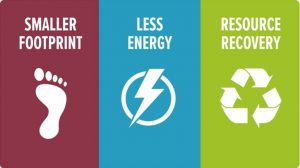 SYNOPSIS
SYNOPSIS
The webinar recording is available here
The latest in our EBNet Webinar series focussed attention on “Sustainable Biological Removal of N and P – Advances and Challenges for Environmental Biotech”. Joining us to share their combined industrial and academic expertise in the topic were Juhani Kostiainen, Plantwork Systems Ltd. and Professor Ana Soares, Cranfield University. Juhani Kostiainen has many years’ experience in industry working on large scale systems and shared his insights on the underlying engineering processes behind the NUTREM® system of biological nutrient removal. Taking us through various innovative options in wastewater (WW) phosphorus and nitrogen recovery was Prof. Soares – ranging from new nanoparticle adsorption methods to small scale systems. The session was chaired by Dr Yongqiang Liu, Southampton University.
Avoiding all the negative issues that go with chemical dosing is a strong reason to choose biological removal methods in WW. Tackling the challenges of a Sequencing Batch Reactor (SBR) requires an understanding of the sequence of essential biological processes. Factors that need to be accounted for in a Balance Tank Fermenter (BTF) of size include flood events, erosion, flow, stirring velocity and sludge storage, to name but a few. Phosphate accumulating organisms (PAO) in particular, depend on the volatile fatty acids (VFA) released from hydrolysed solids, so there are many ways to destroy the process! Correct mixing control can produce stark gradients in both the nutrient and mixed liquor suspended solid (MLSS) levels found within the tank – with high levels at the bottom (near the input) and very low levels at the top (a 2m sampling height). Maintaining that stratification below the discharge point permits high quality discharge at scale. Remaining challenges include retaining as much of the remaining suspended material as possible – the “free swimmers” – to feed back into the process.
Worldwide, the need to recover N&P is well known. P is an increasingly diminishing resource and N is problematic due to the amount of energy consumed in producing and removing it – which is colossal. Work is ongoing to address such resource recovery from WW but an important consideration is the existing infrastructure, as any new technology must complement the existing processes. Ammonia stripping can lead to new uses – e.g. as a calorie dense energy source. Ion exchange processes are currently at a demonstration stage. Zeolites can be used to remove N. Iron nanoparticles are able to bind to P and release upon pH change. Recovered materials have been shown to have lower levels of heavy metal containments than mined phosphate. Another research avenue is biological mineralisation which results in supersaturated crystals forming. Struvite as a product has been shown to have good bioavailability in soil. More speculatively, a move towards decentralisation of WWT is also an interesting prospect on the horizon.
How to approach N&P removal? The goal of achieving WW discharge standards by retaining nutrients in the sludge has one perspective. Finding new ways to recover and monetise nutrients by their selective removal, whether in main- or side-streams, is another. Each involves differing drives/incentives/trade-offs and questions of cost/scale will clearly come into play. Whilst this is a complicated question that cannot be tidily solved by a single technology, we hope that both speakers provided food-for-thought about the array of approaches being examined. Working with the infrastructure to hand was a takeaway message. Knowing this differs worldwide implies that creating flexible options for bespoke solutions may prove of lasting value.



